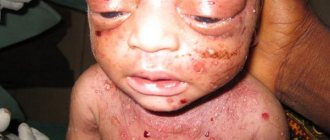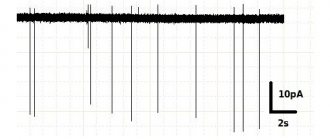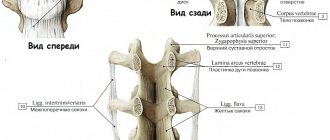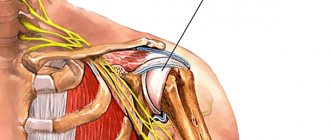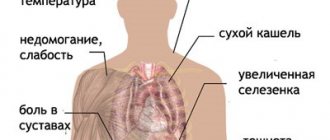Syphilis: symptoms and first signs, how to treat syphilis
Symptoms of syphilis depend on the stage of the disease, age and gender of the patient. The course of this venereal chronic disease may have its own characteristics in each specific case. It is even capable of being asymptomatic for the time being in a latent state.
A distinctive feature of treponema pallidum is its exceptional contagiousness, which is why it is so important to survey the population in order to avoid an epidemic of this disease.
The worst thing is when it has a hidden course and the person does not even realize that he is a carrier of syphilis and poses a danger to his family and others.
How is it transmitted?
Syphilis is caused by Treponema pallidum, which lives in the external environment for only 3 minutes. Therefore, the main route of transmission of the disease is sexual. Infection of the fetus is possible in utero (vertical route) or intrapartum, when the child passes through the mother’s birth canal.
The household route of transmission is uncommon; infection is possible from persons with the tertiary stage of syphilis, when treponema pallidum gets on dishes, linen, towels, etc. from decaying gums. Hematogenous transmission of syphilis through blood transfusion cannot be ruled out.
Cases of infection of medical workers through contact with the blood of a patient are not that rare. It is possible to become infected through “bloody” objects: a shared toothbrush, razor, manicure set, etc.
Syphilis - incubation period
The incubation period is a period of illness that lasts from the moment Treponema pallidum enters the body until the appearance of the first signs of syphilis (see photo), including chancre in combination with regional lymphadenitis. During this period, there is a gradual increase in the number of pathogen cells at the site of their introduction into the patient’s body. Treponema reproduces by division on average once every 30-32 hours.
This period of the disease is characterized by the absence of registered clinical and serological changes in the patient’s body; it lasts on average 3-4 weeks, it can be shortened to 8-15 days or lengthened to 108-190 days. A shortening of the incubation period occurs, as a rule, when the body is simultaneously infected from 2 sources; it is lengthened when taking antibiotics after the moment of infection, for example, for a sore throat, although it should be noted that an increase in the incubation period is not always due to the use of antibiotics.
Transmission routes
Syphilis is classified as a sexually transmitted disease (STD). Transmission is ensured through traditional sexual intercourse, anal and oral sex, even if the carrier has syphilis in the incubation phase.
After the incubation period, a small ulcer will appear at the site where the treponema pallidum bacterium passes, which will only grow if measures are not taken to treat the disease.
When caring for a patient, infection is possible through contact with his personal belongings and the carrier himself.
With this method of infection, signs of syphilis will initially appear on the skin of the legs and arms, and after chancre will form on the genitals.
This sexually transmitted disease can be transmitted, like everything else, through blood. When reusing syringes, razors and other personal hygiene items.
Primary syphilis
After the end of the incubation period, the characteristic first symptoms of syphilis appear. At the site of penetration of the treponemas, a hard chancre is formed, a specific round erosion or ulcer, with a hard, smooth bottom and “turned-up” edges. The size of the formations can vary from a couple of mm to several centimeters. Hard chancre can disappear without treatment. Erosions heal without a trace, ulcers leave flat scars.
The disappearance of chancre does not mean the end of the disease: primary syphilis only passes into a latent form, during which the patient is still infectious to sexual partners.
After the formation of hard chancre, local enlargement of the lymph nodes begins after 1-2 weeks. When palpated, they are dense, painless, and mobile; one is always larger than the others. After another 2 weeks, the serum (serological) reaction to syphilis becomes positive, from this moment primary syphilis passes from the seronegative stage to the seropositive stage. The end of the primary period: body temperature may rise to 37.8 - 380, sleep disturbances, muscle and headaches, and joint aches appear. Dense swelling of the labia (in women), the head of the penis and the scrotum in men is possible.
Syphilis - symptoms and treatment
How long after contact do the first signs appear?
The first symptoms of syphilis appear on average after 21 days, but the period can extend up to three months.
External signs of syphilis
Primary syphiloma (chancroid) is a symptom of the primary period of syphilis, a sign of which is erosion or ulceration that occurs at the site of penetration of pale treponema into the skin or mucous membranes. The formation of a chancre begins with the appearance of a small red spot, after a few days it turns into a nodule with a crust, when rejected, a painless erosion or ulcer of an oval or round shape with clear boundaries is exposed.
Dimensions of chancre:
- ordinary - 1-2 cm in diameter;
- dwarf - from 1 to 3 mm;
- giant - from 2 to 5 cm.
Most often, chancre is single, but with repeated sexual intercourse with an infected partner, multiple rashes may appear. Multiple chancres include “bipolar” chancre, in which ulcers occur simultaneously on different parts of the body, and “kissing” chancre on contacting surfaces.
In 90-95% of cases, the chancre is located in any area of the genital organs. The fact that it is often found at the base of the penis indicates that the condom is not fully effective in preventing syphilis. Very rarely, chancre can appear inside the urethra, in the vagina and on the cervix. An atypical form of chancre in the genital area is indurative edema in the form of extensive painless thickening of the foreskin or labia majora.
Outside the genital organs, chancres are most often found in the area of the mouth (lips [10], tongue [11], tonsils), less often in the area of the fingers (chancre-felon) [5], breast [3], pubis, and navel. Casuistic cases of the appearance of chancre in the chest area [12] and eyelids have been described.
Folman's syphilitic balanitis [14] is a clinical variant of chancre, the sign of which is spots with scales on the head of the penis, combustiform chancre - resembling a superficial burn, herpetiform chancre - in the form of a group of pinpoint microerosions [15], hypertrophic - simulating skin carcinoma [16] .
Syphilitic lymphadenopathy (enlarged lymph nodes) is a symptom of the primary and secondary periods of syphilis.
Syphilitic roseola (spotted syphilide) is a manifestation of the secondary early congenital and, less commonly, tertiary period of syphilis, occurring in 50-70% of patients.
Late roseola (erythema) of Fournier is a rare manifestation of tertiary syphilis, usually occurring 5-10 years after infection. It is characterized by the appearance of large pink spots, often grouped into bizarre shapes [17]. Unlike roseola, with secondary syphilis the spots peel off and leave behind atrophic scars [18].
Papular syphilide is a symptom of secondary and early congenital syphilis; it appears with relapse of the disease in 12-34% of cases. It is a rash of isolated dense nodules (papules) of a hemispherical shape with a smooth surface from pink-red to copper or bluish in color. There is no itching or pain, but if you press on the center of the papule, patients note sharp pain (Jadassohn's symptom).
Condyloma lata - observed in 10% of patients. The warty surface of the papules, which almost always merge into large conglomerates, is weeping, eroded and often covered with a gray foul-smelling coating. There is severe pain during sexual intercourse and defecation. In rare cases, condylomas lata can be located under the armpit, under the mammary glands, in the folds between the toes, or in the recess of the navel [5].
Pustular syphilide can most often be found in patients who abuse alcohol and drugs, are infected with HIV, and have hemato-oncological diseases [13].
Syphilitic alopecia (baldness) is characterized by untreated secondary and early congenital syphilis. Usually appears in 4-11% of cases a few weeks after the appearance of the primary rash (fresh roseola) and spontaneously regresses after 16-24 weeks [4].
Pigmentary syphilide ( change in skin color) is a manifestation of secondary syphilis in the first 6-12 months after infection. Clinically, it is an alternation of pigment and depigment spots (mesh form), and at first only hyperpigmentation of the skin is noted. Depigmented (white) round spots with a diameter of 10-15 mm in the neck area (spotted form) are traditionally called the “necklace of Venus”, and in the forehead area - the “crown of Venus” [15]. Without treatment, the rash spontaneously regresses within 2-3 months. More rare is the “marble” or “lace” form.
Syphilitic tonsillitis is a symptom of secondary syphilis, a sign of which is the appearance of roseola and (or) papules on the mucous membrane of the mouth, pharynx, and soft palate. If the papules are localized on the vocal cords, a characteristic “hoarse” voice appears. Sometimes syphilitic tonsillitis is the only clinical manifestation of the disease, and then it is dangerous in terms of the possibility of sexual (during oral sex) and domestic infection due to the high content of treponemes in the elements of the rash.
Syphilitic onychia (thickening and brittleness of the nail plates) and paronychia (inflammation of the periungual fold) occur at all stages of syphilis and with early congenital syphilis [16].
Tuberous syphilide (tertiary papule) is the main symptom of the tertiary period of syphilis, which can appear as early as 1-2 years from the moment of infection. But as a rule, it occurs after 3-20 years. It is characterized by the appearance of isolated brownish-red seals up to 5-10 mm in size, which rise above the skin level and have a smooth and shiny surface. The outcome of the existence of a tubercle is always the formation of a scar.
Syphilitic gumma (gummy syphilide) characterizes the tertiary period and late congenital syphilis. In this case, a mobile, painless, often single node with a diameter of 2 to 5 cm appears in the subcutaneous tissue. Gummas can occur in muscle and bone tissue, and on internal organs. Most often they are localized in the mouth, nose, pharynx and pharynx, resulting in perforation of the hard palate with food entering the nasal cavity and a “nasal” voice, deformation of the cartilaginous and bone parts of the nasal septum with the formation of a “saddle” and “lornette” nose [18 ].
Symptoms of neurosyphilis
- Ocular and pupillary symptoms result from damage to the optic and oculomotor nerves. These include: progressive loss of vision, ptosis - drooping eyelid, anisocoria - small pupils ("prostitute's eyes"), unequal pupil sizes (Baillarger's symptom), Argyll Robertson pupil - narrowing pupils when the patient focuses on a close object, and not narrowing in directed bright light, oblique deflection - in which one eye moves downward while the other deflects upward [16].
- Labyrinthine deafness is a manifestation of neurosyphilis and late congenital syphilis due to damage to the auditory nerve.
- Tabetic arthropathy occurs in patients with late neurosyphilis and is most often manifested by unilateral enlargement and slight hyperemia (redness) of the joints of the foot and knee (Charcot's joint), which are subsequently deformed with the possible appearance of ulcerative skin defects.
- Ataxic gait is staggering while walking with eyes closed due to decreased joint-muscular sensitivity.
- Instability in the Romberg position is a symptom of neurosyphilis, in which it is impossible to maintain balance in a standing position with your feet together and your arms extended along the body or forward with your eyes closed.
Symptoms of visceral syphilis (from the internal organs) depend on the localization of the process [16].
- Yellowness of the skin and sclera occurs with syphilitic hepatitis.
- Vomiting, nausea, weight loss - with gastrosyphilis.
- Pain in muscles (myalgia), joints (arthralgia), bones - with syphilitic hydrarthrosis and osteoperiostitis.
- Cough with sputum - with syphilitic bronchopneumonia.
- Pain in the heart - with syphilitic aortitis (mesaortitis).
Characteristic is the so-called “syphilitic crisis” - paroxysmal pain in the area of the affected organs [8].
Symptoms of early congenital syphilis:
- syphilitic pemphigus;
- syphilitic rhinitis;
- diffuse papular infiltration;
- osteochondritis of long bones;
- Parrot's pseudoparalysis is a symptom of early congenital syphilis, in which there is no movement of the limbs, but nerve conduction is preserved;
- Sisto's symptom - the constant cry of a child - is a sign of developing meningitis.
Symptoms of late congenital syphilis:
- Parenchymal keratitis is characterized by clouding of the cornea of both eyes and is observed in half of the patients.
- Clutton's joint (syphilitic gonitis) is a bilateral hydrarthrosis in the form of redness, swelling and enlargement of the joints, most often the knees.
- The buttock-shaped skull is characterized by enlargement and protrusion of the frontal and parietal tubercles, which are separated by a longitudinal depression.
- The Olympic forehead is an unnaturally convex and high forehead.
- The Ausitidian symptom is thickening of the sternal end of the right clavicle.
- DuBois's sign is a shortened (infantile) little finger.
- Saber shin is a characteristic symptom of late congenital syphilis in the form of an anterior bend of the tibia, resembling a saber.
- Hutchinson's teeth - dystrophy of the permanent upper middle incisors in the form of a screwdriver or barrel with a semilunar notch on the free edge.
- Gaucher diastema - widely spaced upper incisors.
- Corabelli's cusp is the fifth additional cusp on the chewing surface of the first upper molar.
Can syphilis be asymptomatic?
The latent stage of syphilis is a period when there are no visible signs of syphilis. Without treatment, an infected person continues to have syphilis, even if there are no symptoms.
Early latent syphilis is called syphilis in which the infection occurred within the last 12 months, late latent syphilis - more than 12 months ago. Latent syphilis can last for years [27].
Secondary syphilis
The infection generalizes by 3 months from the moment of infection and lasts 3-5 years, this period is characterized by multiple different-looking rashes in various organs and tissues, and therefore absolutely any symptoms depending on which system/organ is affected more and how much it is affected was previously compromised, that is, was he healthy at the time of the defeat - if so, then the manifestations of syphilis will be minimal.
During this period, there are prodromal symptoms (as with colds - general malaise, pain in muscles, joints, the appearance of fever), they last 7-10 days until the appearance of syphilomas (roseolous-papular rashes) - often these are small red spots with clear boundaries , not merging with each other. When pressed, they disappear, and then appear, or may turn yellow due to the destruction of red blood cells. These rashes do not destroy tissue and, with antisyphilitic treatment, disappear instantly. These rashes are recurrent in nature, that is, they appear again, but are not as pronounced and in much smaller quantities.
Infection and incubation period
Treponema pallidum affects the body through the slightest damage to the skin and mucous membranes, and it does not have to be an open wound, just a thinned area of the skin in a certain area.
After penetration into the body, it is concentrated in the lymphatic system and gradually spreads throughout all fluid environments of the body, accordingly, infection can occur through:
- blood;
- mother's milk;
- saliva;
- vaginal fluid;
- sperm;
- lubricant that is released during sexual intercourse and when aroused.
Treponema pallidum is concentrated in all body fluids.
Routes of infection:
- In 95% of cases, infection with Treponema pallidum occurs through sexual contact and it does not matter whether it is protected sex or not. A condom reduces the risk of infection, but does not eliminate it completely. The type of sex also does not matter. The risk of infection is the same during vaginal, anal and oral intercourse. In all cases, an exchange of body fluids occurs, in one case it is sperm and vaginal fluid, in the other saliva. Anal sex is even much more dangerous than usual, since the pathogen penetrates through damage to the mucous membranes, and the rectum constantly suffers from microcracks. And during vaginal sex, the acidic environment inhibits the spread of infection, but the rectum is deprived of such protection.
- Infection in the home occurs less frequently, but is possible through close contact with an infected person. The pathogen remains active in the open air until the liquid in which it is concentrated dries; therefore, infection can occur from a cup with infected saliva on it or from bed linen with discharge from a patient’s skin rash.
- Infection of a child from the mother during pregnancy, childbirth or breastfeeding is another route of infection. Cases of such infection are minimal, since pregnant women undergo mandatory testing for syphilis.
- Infection through blood leads to disease in 100% of cases. The patient’s blood, especially at the second stage of the disease, contains the maximum concentration of treponema in the body. This method of infection can occur through donor blood transfusion, when using one syringe (especially in drug addicts).
- The professional route of infection occurs only among doctors, since they have direct contact with infected people.
Important. Infection during unprotected sex is 95%.
Incubation period and its manifestations
After entering the body of a healthy person, the pathogen is concentrated in the lymphatic system, since this is the only body system with suitable conditions for it. During this period, the pathogen adapts to the conditions of the body and multiplies for further spread throughout the body.
The period of adaptation of Treponema pallidum is called the incubation period. This time is characterized as asymptomatic, since the disease does not manifest itself in any way.
Incubation can last from 10 to 90 days, the average time is 20-45 days. When the first symptoms appear depends on the state of the body. Incubation will decrease if the infected person has a severely weakened immune system, and a healthy body will slow down the spread of infection.
After adaptation of treponema pallidum in the body through the walls of small blood vessels, it spreads through the bloodstream and the first symptoms of the disease begin to appear. The entire period of the disease, from the manifestation of the first symptom to the most severe damage to the body, is divided into stages of development, each of which is distinguished by certain clinical manifestations.
A distinctive feature of the disease is damage to the skin, which manifests itself as a rash, but depending on the stage it looks different, but has similar characteristics:
- cyclical appearance;
- disappearance, even without treatment;
- does not leave scars after disappearance (except for the tertiary stage);
- despite the strong inflammatory process, there is no increase in temperature and symptoms of intoxication of the body.
Important. Treponema pallidum is very sensitive to acidic and alkaline environments, therefore, for prevention purposes, you can use 0.01% Chlorhexidine bigluconate and Gebitan solution.
Tertiary syphilis
Tertiary syphilis is characterized by a long latent course. It can appear after 3-4 years (with complete absence of treatment, or with insufficient treatment). Most often, this form of pathology can be found in patients suffering from chronic alcoholism, tuberculosis or other infections.
During this period, a small amount of dense infiltrates, localized in the subcutaneous tissue or in deeper tissues, is found on the patient’s skin and mucous membranes. After some time, they disintegrate, and in their place painless ulcers appear, which scar only after a few months or years. It should be noted that such syphilides are not accompanied by subjective disorders and do not disturb the general condition of the patient. They contain very little pathogen, and therefore are practically non-contagious.
Syphilis of the nose
Nasal syphilis occurs during different periods of the disease.
Nasal involvement in early congenital syphilis
With early congenital syphilis, the nose is affected in 75% of cases. The disease manifests itself either immediately after birth or during the first 4 to 5 weeks of the child’s life. A dry runny nose, accompanied by noisy exhalation and inhalation, is quickly replaced by severe rhinitis. The child begins to sniffle, snort and sneeze, and refuses to breastfeed. The mucous membrane at the entrance to the nose becomes hyperemic, thickens and becomes crusty. A viscous secretion is released from the nasal passages. Due to the development of the ulcerative process, blood appears in the discharge over time. From an epidemiological perspective, children during this period become extremely dangerous to others.
Sometimes newborns develop gummous infiltration in the nose. The disintegration of gummas is accompanied by damage to the bone structures, as a result of which a perforation of the nasal septum develops, and various types of retraction of the external nose are formed.
Syphilitic rhinitis of newborns must be distinguished from gonorrhea and nasal diphtheria. Persistent runny nose, thick nasal discharge, crusting, skin rash and enlarged spleen are factors that indicate a specific process.
Rice. 5. Diffuse infiltration of Hochsinger's skin and syphilitic rhinitis of the newborn.
Nasal lesions in late congenital syphilis
Nasal lesions in late congenital syphilis develop 5 or more years after birth. Foreign literature describes cases of the development of pathology at 23–28 years of human life.
The secretion of a viscous secretion, the formation of crusts, a feeling of dryness in the nose and throat, loss of smell and the appearance of pain in the nose, forehead and eye sockets are the main manifestations of syphilitic congenital runny nose in late congenital syphilis. As a result of tubercular infiltration, the mucous membrane grows, gradually obstructing the nasal passage.
The process often occurs like tertiary syphilis. Gummas are located on the nasal mucosa, in cartilage and bone, while the mucous membrane is involved in the pathological process for the second time. The nasal passages become overgrown, the wings of the nose, its back, tip, turbinates, bottom and nasal septum are destroyed. Recessed nose is a pathogonic symptom of late congenital syphilis. The nose may have the shape of a saddle (“saddle nose”), or be similar to the nose of a bulldog or have a lorgnette-like appearance.
Syphilis of the nose in the primary period of the disease
Nasal involvement in the primary stage of the disease is rare. Hard chancre most often appears on the wings of the nose, at the entrance to its cavity on the skin in the area of the septum. The chancre has the appearance of red erosion with a roller-like thickening along the periphery, a greasy coating is detected at the bottom, and a dense infiltrate is palpated at the base.
Nasal syphilis in the secondary period of the disease
Nasal syphilis in the secondary period of the disease develops 6-7 weeks after the appearance of chancroid and manifests itself in the form of roseola (erythema) or papules. Erythema (redness) spreads to the mucous membrane, which swells and begins to produce a secretion of a mucous or bloody-serous nature. A little later, papules appear, which are located on the skin at the entrance to the nasal cavity. Due to constant irritation, papules erode and the healing process is delayed.
Syphilis of the nose in the tertiary period of the disease
The nose is most often affected in the tertiary period of the disease. The lesion affects the mucous membrane, periosteum, bone and cartilage, where gummas with decay or diffuse infiltrates develop. Destroyed areas of bone tissue are sequestered and come out with pus. The decay of gumma is accompanied by a putrid odor. The gumma itself acquires a bluish-red color and becomes covered with purulent-bloody crusts. Removing crusts often leads to bleeding.
The bony septum and floor of the nose are the most commonly affected areas. When they are destroyed, communication occurs with the oral cavity and nasal passages. The nasal passages narrow. The patient experiences severe pain in the nose, eye sockets and forehead area.
Gummas can form in cartilage and bone, while the mucous membrane is involved in the pathological process for the second time. The nasal passages become overgrown, the wings of the nose, its dorsum, tip, turbinates, bottom and nasal septum are destroyed, the nose sinks and takes on the shape of a saddle (“saddle nose”). The act of breathing, swallowing and phonation is disrupted.
Patients with a gummous process in the nose during the period of tertiary syphilis are practically not dangerous to others from an epidemiological perspective.
Gumma in the nose should be distinguished from tuberculosis and a malignant tumor. Large deformations of the external nose after treatment are corrected with rhinoplasty.
Rice. 6. Forming nasal gumma.
Rice. 7. Gummous lesion of the wings of the nose.
Rice. 8. Nasal syphilis in the tertiary period of the disease - perforation (destruction) of the nasal septum.
Rice. 9. Recession of the nose is a pathogonic symptom of late congenital and tertiary syphilis.
Rice. 10. Syphilis of the nose. Destruction of the structures of the external nose by the gummous process.
Rice. 11. Syphilis of the nose. Tertiary period of the disease. Destruction of all structures of the external nose, its septum, bottom, anterior part of the alveolar processes, teeth and upper lip.
Rice. 12. Complete destruction of all structures of the nose.
Rice. 13. With the disintegration of gumma and destruction of bone between the nasal septum, nasal cavity and oral cavity, perforations occur, which makes it difficult for the patient to eat, phonation and the act of swallowing.
Congenital syphilis
It is transmitted from a sick mother when treponemes penetrate the placenta into the fetus. Syphilis infection can occur both during conception and much later. Regardless of the time of infection, pathological tissue changes are observed only in the VI-VII months of pregnancy, so active prevention of syphilis in the early stages will help give birth to a healthy child.
The possibility of transmitting pathogens through the father's sperm has not yet been proven, so all preventive measures usually concern the expectant mother. These include: identification of sick women in the early stages, full registration of pregnant women, monitoring the treatment of infected persons. In order to prevent the development of negative changes, mandatory regular examinations of pregnant women are carried out for the presence of treponemas and external signs of congenital syphilis.
Features of syphilis symptoms in men and women
The secondary and tertiary periods have almost the same symptoms. Differences in symptoms for men and women are present only in the primary period, when chancre appears on the genitals:
- gangrenous chancre on the penis - there is a possibility of self-amputation of the distal part of the penis;
- chancre on the cervix. Signs of syphilis, when hard chancre is located on the uterus in women, are practically absent and can only be detected during a gynecological examination;
- chancre in the urethra is the first sign of syphilis in males, which is manifested by discharge from the urethra, a dense penis and an inguinal bubo.
Attention, abnormal!
After the incubation period, the time comes for the formation of ulcers and, accordingly, the disease enters the first stage.
But, despite the presumptive outcome for each phase, abnormal phenomena on the skin are possible.
Based on this, unexpected manifestations are divided into several categories:
- Damage to skin vessels that occur around syphilitic chancre. This symptom changes the color of the penis, scrotum of men and female genitalia to a darker color with a blue tint. Women are more likely to experience syphilis on the lips. It is often confused with other gynecological inflammatory processes. However, only syphilis is characterized by swelling, which during diagnosis will not show any deviations from the norm, but the person’s lymph nodes will be inflamed.
- Idiopathic syphiloma is an inflammation that causes Treponema pallidum on the three main fingers of the hand. Pieces of skin peel off at the affected areas, which leads to slight blood loss, more similar to a recent moderate burn.
- Syphilitic amygdalitis is an inflammation of the submandibular or cervical tonsil. With this anomaly, the structure of the tonsil itself does not change, only an inflammatory process is present, which makes it difficult to swallow saliva and food. All accompanying symptoms are more reminiscent of a sore throat (fever, pain, pain when swallowing), but in our case, inflammation is present in only one tonsil.
Diagnostics
Syphilis is diagnosed by examination, characteristic signs and laboratory tests:
- Examination by a dermatovenerologist. He asks the patient in detail about the course of the disease, examines the skin, genitals, and lymph nodes.
- Detection of treponema or its DNA in the contents of gummas, chancre, syphilides using dark-field microscopy, direct immunofluorescence reaction, and PCR.
- Instrumental studies: search for gummas using ultrasound, MRI, CT, X-rays, etc.
- Carrying out various serological tests: Non-treponemal - search for antibodies against treponema membrane lipids and phospholipids of tissues destroyed by the pathogen (Wassermann reaction, VDRL, rapid plasma reagin test). The result obtained may be false positive, i.e. show syphilis where there is none. Treponema - search for antibodies to Treponema pallidum (RIF, RPHA, ELISA, immunoblotting, RIBT).
Remember that for such a serious disease you cannot diagnose yourself “on the Internet” by reading about syphilis and its symptoms. The fact is that the rash and other changes can visually copy those of completely different diseases, so that even doctors are periodically misled.
Consequences of syphilis
If left untreated, syphilis gradually spreads throughout the body and affects more and more healthy tissues and organs. Sometimes there is temporary relief, after which the patient’s condition sharply worsens. Complications of syphilis depend on its stage.
Primary syphilis can be complicated by the following conditions:
- tissue necrosis at the location of the chancre;
- balanitis;
- phimosis;
- paraphimosis
With secondary syphilis, the following complications are noted:
- damage to internal organs by syphilis;
- damage to the nervous system;
- bone damage.
Complications of tertiary syphilis are:
- damage to internal organs;
- brain damage;
- Treponema damage to the tissues of the neck and face;
- pathological fractures of bones when they are affected by syphilis;
- bleeding as a result of vascular rupture.
Treatment of syphilitic rash
Treatment of syphilitic rashes during all periods of the disease is not carried out separately, since it is only a separate symptom of the disease. Along with it, the entire body is affected and complex therapy for the disease is required.
To treat the disease, antibacterial agents from the penicillin series are used; if they are intolerant, other antibiotics from the group of macrolides, tetracyclines and cephalosporins are prescribed. The schematic prescription of drugs will depend on the stage of the disease and the general condition of the patient.
Treponema pallidum is most sensitive to penicillin-containing drugs that are administered by injection.
Table No. 2. Treatment at all stages of syphilis:
| Stage of syphilis | Features of treatment |
| First | Therapy at the first stage is carried out using water-soluble penicillins. Drugs in this group are most active against the causative agent of syphilis. Treatment is carried out in a hospital setting, since the drugs require frequent injections to maintain the required therapeutic concentration. The penicillin group is the drugs of choice, not only because of its high efficiency, but also because of its availability. The price of medicines is much lower than similar ones. Medicines:
|
| Second | Treatment of the second stage does not differ significantly from the treatment of primary syphilis; penicillin drugs are also prescribed. If they are intolerant, an alternative replacement is selected from the group of macrolides, tetracyclines and cephalosporins. Replacement drugs:
|
| Third | Therapy of the third stage is complicated by pathological lesions of the body, so treatment is prescribed based on the degree of damage to the body and the patient’s condition. As with the first two stages, the main thing is to take antibacterial drugs, but according to a specific regimen prescribed by the doctor. Further, complex treatment includes taking bismuth-based drugs and medications for the symptomatic treatment of damaged organs. |
Important. The instructions for bismuth preparations prohibit the use of the drug by patients with renal and liver failure.
The video in this article is about skin lesions caused by secondary syphilis.
How to treat syphilis?
The treatment of syphilis is approached in a comprehensive manner, taking into account many individual factors (age, gender of the patient, stage of development of the disease, the presence of concomitant diseases, general condition of the body, etc.). In addition, all sexual partners of the suspected patient should also be examined for the presence of syphilis and, if necessary, undergo a course of therapy.
If a patient has primary syphilis, then everyone who has had sexual intercourse with him over the past three months must undergo examination and tests. In the case of secondary syphilis - everyone who had contact with the patient over the past year. The timeliness of the therapy itself, as well as the correct selection of modern medications, is important for achieving success in the treatment of this disease.
The most effective method of treating syphilis is the introduction of water-soluble penicillins into the body. This therapy is carried out in a hospital setting for 24 days with injections every 3 hours. The causative agent of syphilis is quite sensitive to penicillin antibiotics, but there is a possibility of an allergic reaction to these drugs or the ineffectiveness of such therapy. In this case, penicillin is replaced with drugs of the tetracycline, macrolide, and fluoroquinolone groups. In addition to antibiotics, natural immune stimulants, vitamins, and immunostimulants are also indicated for syphilis.
From birth side by side with danger
Syphilis can be transferred from mother to child during pregnancy, which negatively affects the fetus during the prenatal period.
Modern medicine has identified the main indicators by which it can be judged that syphilis affected intrauterine growth:
- Interstitial keratitis is an inflammation of the outer mucous membrane of the eye and the eyeball. This can be observed as significant redness and suppuration of the eyes. After completing the course of treatment, traces of surgical intervention will remain on the eyeball, and leukoma (white mesh) will also appear on the eyes. Typically, such changes also lead to a significant decrease in vision, pain and tearing of the eyes.
- Chronic lack of hearing - the fetus during intrauterine growth is subject to an active attack by Treponema pallidum, as a result of which hearing loss is one of the main symptoms of a woman suffering from syphilis during pregnancy;
- Hutchinson's teeth are unfinished development of dental tissue during pregnancy in the fetus. In this case, the teeth have an unpleasant appearance, may grow sparsely, and are not completely covered with enamel. And all this leads to their early destruction.
If a woman has undergone a course of treatment and got rid of Treponema pallidum, the child will still have a chronically weakened immune system.
But with incorrect and untimely treatment, the child will definitely have external abnormalities after birth.
Breastfeeding in the presence of syphilis is strictly prohibited for mothers; milk with Treponema pallidum bacteria automatically passes to the child, causing only harm.
A woman after treatment for syphilis can have children, but for a more accurate conclusion, you need to get a referral from your GP for the two main tests described above.
Prevention
Standard preventive measures include avoiding casual sex, using condoms, and to prevent occupational syphilis, wearing disposable latex gloves before examination, manipulation and surgery.
Condoms are not 100% protection - the chancre can be located extragenitally (pubis, perineum), and with secondary syphilis, a “necklace of Venus” is formed on the skin. In these cases, the infection from syphilis is transmitted by contact to the partner’s skin.
With syphilis, lifelong immunity is not formed. Having successfully recovered from this disease, you can become infected and get sick again. In this case, the disease will be just as severe. Therefore, there are no vaccinations against syphilis, and there cannot be.
Differential diagnosis
Syphilis is a disease very similar to a large number of other diseases, especially when skin rashes appear as a secondary disease. Therefore, sometimes even experienced doctors are confused in the diagnosis.
Table No. 1. Differential diagnosis of syphilitic rashes and similar diseases:
| Differential diagnosis | Differences between another disease and skin manifestations of secondary syphilis |
| Syphilitic roseola and measles | The skin manifestations are very similar, but measles is accompanied by fever, symptoms of intoxication, rhinitis, attacks of nausea and vomiting. |
| Papular syphilide and psoriasis | With psoriasis, the rashes have a chronic course with frequent exacerbations. Papules tend to grow peripherally and unite. Damage to the nail plates is observed. |
| Vesicular syphilide and vesicular lichen | The rash is accompanied by itching, burning and pain. The rash appears after swelling and inflammation of the skin. |
| Syphilitic leukoderma and vitiligo | Rashes of various shapes and ivory colors tend to grow peripherally and unite. |
| Diffuse syphilitic alopecia and favus of the scalp | Spots appear followed by transformation into a dry round element of a yellow hue. Prone to hair spreading and atrophy. |
Forecast
It all depends on the stage of development of the disease and the treatment method. If therapy was started in the early stages of the disease (primary, secondary and early latent syphilis) and is carried out using treponemocidal antibiotics, then in almost all cases without exception, a complete clinical cure occurs, and relapses of early syphilis and the occurrence of late forms of syphilis are prevented.
Treatment of syphilis in pregnant women in the first half of pregnancy in most cases guarantees the birth of a healthy baby. In the case of congenital syphilis, the prognosis is favorable if treatment of the disease was started in a timely manner. Treatment of later forms of the disease is less successful, since it only slows down the progression of the disease, but in all cases it can restore the impaired function of the affected organs and lead to negative serological reactions.
